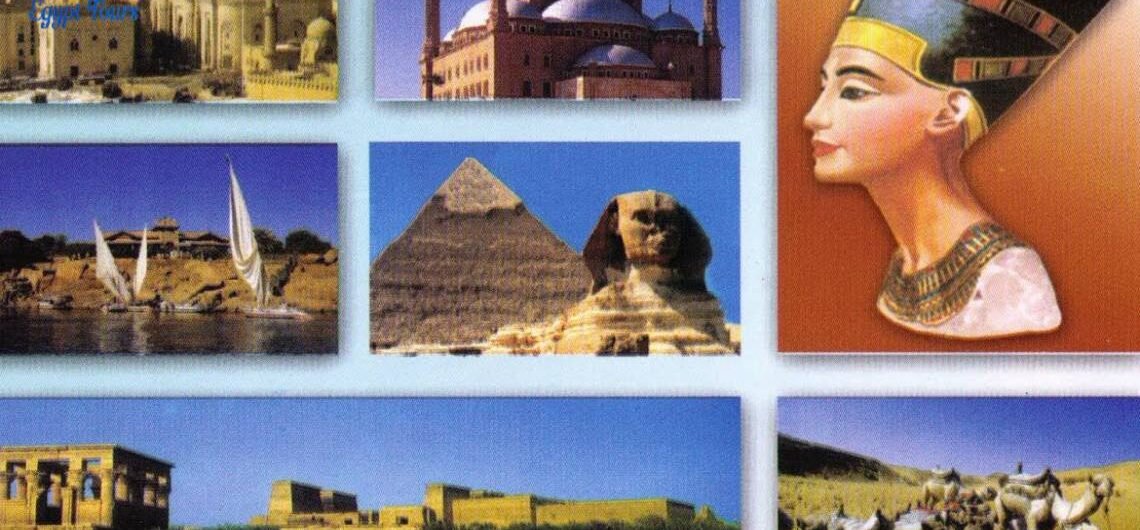Hidden Gems in Egypt, Egypt is often celebrated for its iconic pyramids and the Sphinx, but there’s so much more to this enchanting country than its ancient wonders. From stunning landscapes to lesser-known archaeological sites, Egypt offers a wealth of Hidden Gems in Egypt waiting to be discovered. In this post, we will take you on a journey beyond the well-trodden paths.
Here are some of the most Hidden Gems in Egypt:
1. Siwa Oasis: The Tranquil Haven
Location and Access Nestled close to the border with Libya, Siwa Oasis is a hidden jewel in the Western Desert. To reach Siwa, travelers typically drive from Cairo, which takes about 8 to 10 hours, or they can choose to fly to the nearest airport in Marsa Matrouh and continue by road. The journey is an adventure in itself, as the landscape transforms from bustling city life to the serene vastness of the desert.
Cultural Heritage Siwa is not just a picturesque landscape; it’s steeped in history and rich with cultural heritage. The oasis is home to the Siwi people, who have preserved their Berber language and traditions over the centuries. One of the must-visit sites is the Oracle Temple of Amun, where Alexander the Great is said to have sought guidance. The temple, with its crumbling walls and ancient inscriptions, provides a profound connection to Egypt’s pharaonic past.
Natural Attractions and Activities The landscape of Siwa is mesmerizing, with its salt lakes and date palm groves. The most famous of these is the Great Siwa Salt Lake, a stunning site particularly during sunset when the sky reflects off the water’s surface. Travelers can enjoy various activities such as:
- Swimming in Cleopatra’s Bath: This natural spring is said to have been frequented by the famed queen herself. The refreshing waters are a delightful retreat after a day of exploration.
- Exploring Shali Fortress: This ancient mud-brick fortress offers panoramic views of the oasis. Its intricate architecture and historical significance make it a great spot for photography and learning about local history.
- Camping Under the Stars: Siwa’s remote location makes it an excellent place for stargazing. Spending a night in the desert, surrounded by the tranquil silence and under a canopy of stars, is an unforgettable experience.
2. Luxor’s Valley of the Kings: More than Just Tombs
Introduction to Luxor While Luxor is well-known for its grand temples and the Valley of the Kings, many visitors overlook the surrounding area, rich with lesser-known tombs and archaeological findings.
Luxor is often called the world’s greatest open-air museum, and for good reason.
Valley of the Kings: Beyond Tutankhamun The Valley of the Kings is home to the tombs of many pharaohs, including the famous tomb of Tutankhamun. However, numerous other tombs are equally fascinating yet less crowded. Each tomb is a work of art, adorned with colorful hieroglyphs that tell the life stories of their occupants. Some lesser-known but remarkable tombs include:
- Tomb of Ramses VI: This tomb showcases intricate paintings and a well-preserved burial chamber, offering insights into the beliefs and practices of ancient Egyptians regarding the afterlife.
- Tomb of Seti I: Regarded as one of the most beautiful tombs in the valley, Seti I’s tomb features vivid wall paintings and stunning architecture that draw art enthusiasts and historians alike.
Exploration Beyond the Valley Beyond the main tourist attractions, visitors can explore:
- The Colossi of Memnon: These two massive stone statues are remnants of the mortuary temple of Amenhotep III. The surrounding area is often quieter, giving visitors a chance to reflect on the grandeur of Ancient Egypt without the crowds.
- Medinet Habu: The mortuary temple of Ramses III is less frequented yet incredibly well-preserved. Its reliefs depict battles and daily life, providing a glimpse into ancient Egyptian culture and society.
3. The Red Sea: Diving into Adventure
Introduction to the Red Sea Coast While many tourists flock to popular spots like Sharm El Sheikh, the Red Sea is home to lesser-explored locations offering breathtaking underwater experiences and serene beaches. The coastal town of Dahab is a prime example of this hidden paradise.
Diving and Snorkeling Dahab’s coastline boasts some of the best diving spots in the world. Here are a few must-visit sites:
- Blue Hole: Known for its striking underwater topography, the Blue Hole(Read More) is famous among divers for its deep drop-offs and vibrant coral reefs. It is essential to note the necessary diving certifications for those wishing to explore its depths.
- The Canyon: This site offers a spectacular underwater labyrinth filled with magnificent corals and diverse marine life. Snorkelers will also find stunning reefs just off the beach, making this a great location for all skill levels.
Relaxation and Culture Besides diving, Dahab is perfect for relaxation and experiencing local Bedouin culture. Visitors can unwind at the beach, enjoy fresh seafood at local restaurants, or participate in yoga sessions at beachfront cafes. Engaging with the local Bedouin offers unique insights into their customs, traditional crafts, and desert lifestyles through experiences like:
- Bedouin Dinner: Enjoy a traditional meal in a Bedouin tent under the stars, featuring local dishes cooked over an open flame. It’s an excellent way to savor authentic flavors while learning about their rich culture.
- Desert Safari: Explore the stunning Sinai Desert on a jeep or camel safari, where you can visit hidden springs, ancient rock carvings, and even catch a glimpse of the majestic Mount Sinai.
4. Aswan: The Gateway to Nubia
Aswan, located in the south of Egypt, is often overshadowed by other cities but offers a rich cultural experience and beautiful landscapes. Known for its Nubian heritage, Aswan is a city where the Nile flows peacefully, punctuated by islands and lush greenery.
Visitors can take a short felucca ride to the nearby Nubian villages, where they can explore the vibrant homes painted in bright colors and learn about the traditions and crafts of the Nubian people. Local markets offer handmade crafts, jewelry, and textiles that reflect their rich heritage.
Historical Sites While in Aswan, don’t miss:
- Philae Temple: Dedicated to the goddess Isis, this temple complex is located on Agilkia Island.
- It’s a beautiful site, especially at sunset, when the temple is illuminated against the deepening sky. A motorboat ride is necessary to reach the temple, adding to the sense of adventure.
- The Unfinished Obelisk: This ancient granite obelisk gives insights into the dynastic efforts of the ancient Egyptians. Visitors can see the techniques used to quarry and carve stone, providing a glimpse into the monumental projects of the past.
5. The Ancient City of Memphis and Saqqara
Introduction to Memphis Often overshadowed by Giza’s iconic pyramids, the ancient city of Memphis once served as the capital of Ancient Egypt.
This UNESCO World Heritage site is home to fascinating ruins and temples that are richly steeped in history.
Key Attractions Of Memphis
- The Alabaster Sphinx: This impressive statue, one of the largest sphinxes in Egypt, provides a sense of the grandeur of Memphis during its prime. Visitors often marvel at its craftsmanship and size while learning about its significance to Egyptian culture.
- Tomb of Mereruka: This large tomb belongs to a high official from the Sixth Dynasty and features intricate carvings depicting daily life, agricultural scenes, and religious rituals, offering insights into the society of Ancient Egypt.
Saqqara: The Step Pyramid Just a short distance from Memphis lies Saqqara, which houses the Step Pyramid of Djoser, the world’s earliest colossal stone building. The site is vast, and a visit here allows for exploration of:
- Djoser’s Complex: The architecture of the Step Pyramid was revolutionary, marking a significant advancement in pyramid construction. The surrounding complex includes temples and courtyards, ideal for exploring ancient rituals.
- Tomb of Ti: One of the most famous tombs in Saqqara, it features incredible wall paintings that showcase scenes of hunting, agriculture, and daily life, offering a vivid glimpse into the past.
Conclusion
Egypt’s allure extends far beyond its famed pyramids. From the serene Siwa Oasis to the bustling markets of Aswan, and the historical riches of Memphis and Saqqara, the country is laced with Hidden Gems in Egypt waiting to be explored.
Each destination in Egypt offers rich cultural experiences, stunning natural beauty, and a deep connection to history. Venturing off the beaten path allows travelers to truly immerse themselves in Egypt’s essence. Discover the stories and traditions that have shaped this extraordinary land.
Whether you’re wandering the ancient streets of Luxor, diving into the Red Sea’s crystal-clear waters, or experiencing Nubian culture, Egypt invites you to explore beyond the pyramids and uncover hidden treasures.
10. FAQs Of Hidden Gems in Egypt
- Include a List of Frequently Asked Questions Related to the Topic:
- What is the best time to visit Cairo?
The ideal time to visit Cairo is from October to April when the weather is cooler and more comfortable for exploring. - How long should I spend at the Pyramids of Giza?
A visit of about 2-3 hours is recommended to fully explore the Pyramids, the Sphinx, and the surrounding area. - Is it safe to travel to Egypt?
Yes, but it’s advisable to stay updated on travel advisories and follow local guidelines. - What should I wear while visiting religious sites?
Modest clothing is recommended, such as long pants and sleeves, especially in mosques.
- What is the best time to visit Cairo?

